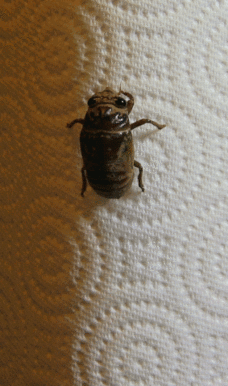Biology:Imago

In biology, the imago (Latin for "image") is the last stage an insect attains during its metamorphosis, its process of growth and development; it is also called the imaginal stage, the stage in which the insect attains maturity. It follows the final ecdysis of the immature instars.[1]
In a member of the Ametabola or Hemimetabola, in which metamorphosis is "incomplete", the final ecdysis follows the last immature or nymphal stage. In members of the Holometabola, in which there is a pupal stage, the final ecdysis follows emergence from the pupa, after which the metamorphosis is complete, although there is a prolonged period of maturation in some species.[2]
The imago is the only stage during which the insect is sexually mature and, if it is a winged species, has functional wings. The imago often is referred to as the adult stage.[1]
Members of the order Ephemeroptera (mayflies) do not have a pupal stage, but they briefly pass through an extra winged stage called the subimago. Insects at this stage have functional wings but are not yet sexually mature.[1]
The Latin plural of imago is imagines, and this is the term generally used by entomologists – however, imagoes is also acceptable.[3]
See also
References
- ↑ 1.0 1.1 1.2 Carpenter, Geo. H., The Life-Story of Insects. Cambridge University Press 1913. May be downloaded from: https://www.gutenberg.org/ebooks/16410 or https://archive.org/details/thelifestoryofin16410gut
- ↑ Richards, O. W.; Davies, R. G. (1977). Imms' General Textbook of Entomology: Volume 1: Structure, Physiology and Development Volume 2: Classification and Biology. Berlin: Springer. ISBN 0-412-61390-5.
- ↑ Gordh, Gordon; Headrick, David H. A Dictionary of Entomology. Publisher: CABI 2010. ISBN:978-1845935429
External links
| Wikisource has the text of the 1911 Encyclopædia Britannica article Larval Forms. |
 |

